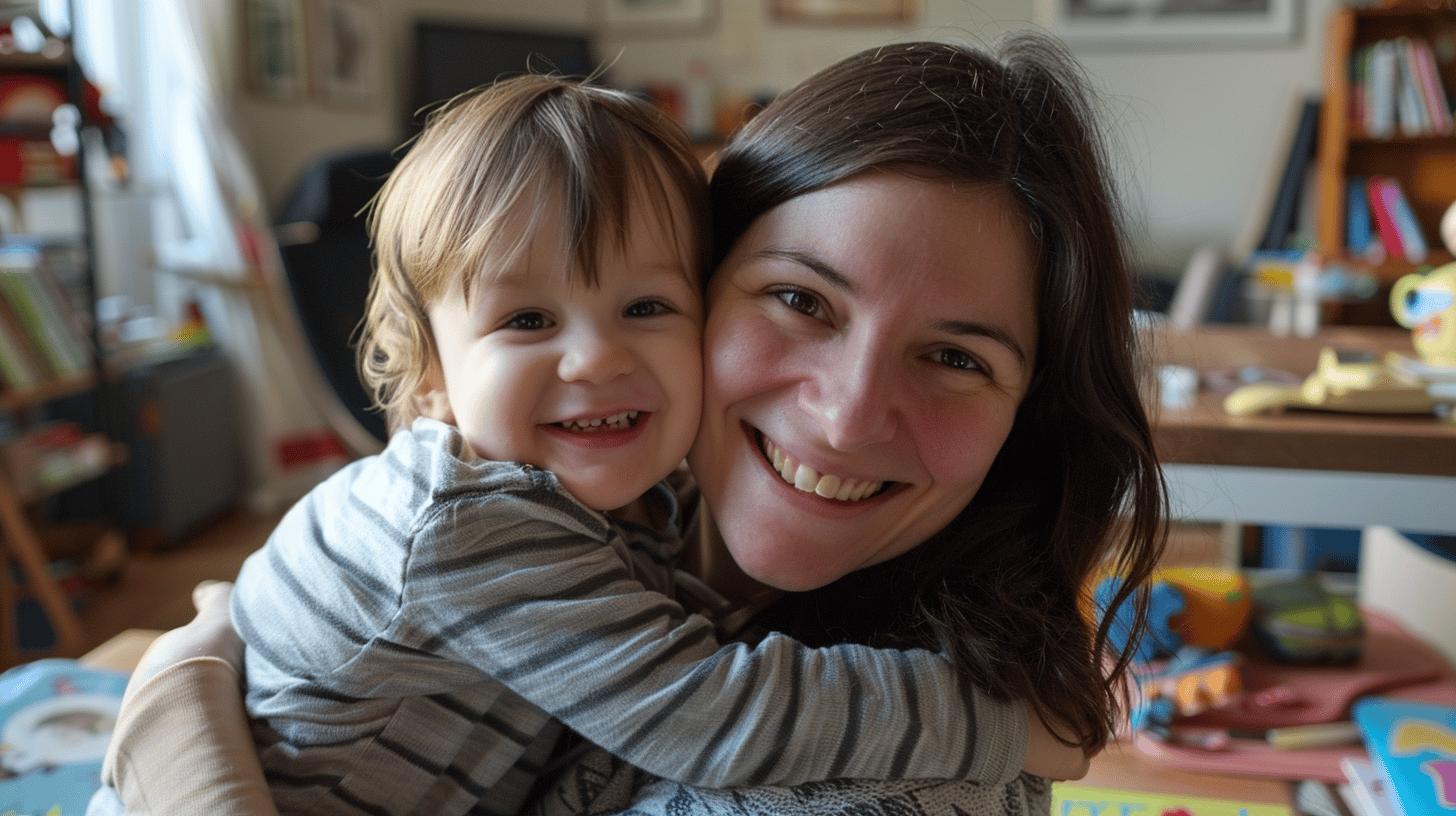Is it possible to shower your child with love and still enforce limits? Absolutely. Parenting with love and limits strikes the delicate balance between showing affection and maintaining boundaries. This methodology ensures children grow up emotionally healthy and respectful. In this article, we'll explore core principles and actionable strategies to achieve balanced parenting. Ready to transform your family dynamics? Dive in and discover how combining love with limits can lead to a harmonious household.
The Core Principles of Parenting with Love and Limits
Parenting with love and limits involves balancing affection with structured boundaries to effectively manage child behavior. This method ensures that children feel loved and secure while understanding the importance of rules and consequences. It creates a harmonious family environment where respect and understanding thrive.
Key strategies in this approach include consistent discipline, clear communication, and setting realistic expectations. Consistency helps children know what to expect, which fosters a sense of security. Clear communication ensures that children understand the reasons behind rules and limits, while realistic expectations help them achieve success without feeling overwhelmed.
- Consistent Discipline: Apply rules and consequences uniformly to help children understand the importance of boundaries.
- Clear Communication: Explain the reasons behind rules and consequences to foster understanding.
- Setting Realistic Expectations: Set achievable goals to build confidence and promote a sense of accomplishment.
- Positive Reinforcement: Encourage good behavior by rewarding positive actions.
- Empathy and Understanding: Show empathy towards children's feelings to build a strong emotional connection.
Combining love and limits promotes healthy emotional development and fosters a respectful parent-child relationship. It teaches children self-discipline, emotional regulation, and the ability to make responsible decisions. This balanced approach equips children with the tools they need to navigate life's challenges while feeling supported and understood by their parents.
Effective Techniques for Combining Love and Limits

Combining love and limits in parenting requires practical methods that teach children responsibility while maintaining a caring environment. Techniques such as time-outs, positive reinforcement, and natural consequences can help children understand the impact of their actions. These methods not only shape behavior but also instill important life skills.
Active listening and empathy are crucial for effective parenting. When parents listen to their child's feelings and show understanding, it strengthens the parent-child bond. Maintaining a calm demeanor during conflicts helps to de-escalate situations, making it easier to apply discipline without causing emotional distress.
- Time-Outs: Use time-outs to give children a chance to calm down and reflect on their behavior.
- Positive Reinforcement: Reward good behavior to encourage its repetition.
- Natural Consequences: Let children experience the natural outcomes of their actions to learn responsibility.
- Active Listening: Pay full attention to your child's words and feelings to show empathy.
- Maintaining Calm: Stay calm during conflicts to model self-control and rational behavior.
- Establishing Routines: Create consistent routines to help children feel secure and understand expectations.
Establishing routines and rules is essential for helping children understand what is expected of them. Consistent routines provide a sense of security, making children feel more stable and confident. Clear rules help children understand boundaries and the consequences of crossing them, promoting responsible behavior.
These techniques ensure that children receive the guidance they need while feeling loved and valued. By balancing affection with discipline, parents can create a nurturing environment that supports healthy emotional development and fosters a respectful parent-child relationship.
Real-Life Scenarios of Parenting with Love and Limits
Parents often face complex challenges when managing child behavior and family dynamics. Real-life scenarios can provide valuable insights into how combining love and limits can effectively address these issues.
Consider the case of a 10-year-old who refuses to do homework. The parents implemented a consistent routine and clear rules, explaining the importance of homework and setting realistic expectations. They used positive reinforcement to reward completed homework and applied natural consequences, like reducing screen time, for incomplete tasks. This approach helped the child understand responsibilities while feeling supported.
| Scenario | Approach | Outcome |
|---|---|---|
| Child refuses to do homework | Implement consistent routine, positive reinforcement, natural consequences | Child understands responsibilities, improved homework completion |
| Teenager breaks curfew | Set clear rules, communicate expectations, apply consistent discipline | Teen respects curfew, improved trust and communication |
| Sibling rivalry and fighting | Active listening, empathy, conflict resolution techniques | Reduced conflicts, stronger sibling bond |
These examples show the effectiveness of balancing love and limits in various parenting challenges. By combining structured boundaries with affection, parents can manage child behavior while fostering a positive and respectful family environment. This approach not only resolves immediate issues but also promotes long-term emotional development and healthy family dynamics.
Benefits of Parenting with Love and Limits

Combining love and limits in parenting promotes healthy emotional development in children. When children feel loved and supported while also understanding the boundaries set for them, they develop a balanced emotional foundation. This balance helps them navigate various social and emotional challenges effectively.
A balanced approach fosters a respectful parent-child relationship. When parents consistently apply rules and consequences, children learn to respect boundaries and authority. Simultaneously, the love and support provided build a strong emotional bond, ensuring children feel valued and understood. This combination helps in creating a harmonious family environment.
- Emotional Regulation: Children learn to manage their emotions better when they understand rules and feel supported.
- Healthy Boundaries: Clear boundaries teach children the limits of acceptable behavior, promoting self-discipline.
- Improved Behavior: Consistent discipline and positive reinforcement encourage good behavior and reduce conflicts.
- Stronger Relationships: A balance of love and limits strengthens the bond between parents and children, fostering trust and respect.
By promoting better emotional regulation and understanding of healthy boundaries, this parenting approach equips children with essential life skills. They learn to make responsible decisions, manage their emotions, and interact respectfully with others. This foundation is crucial for their overall well-being and success in life.
Implementing Parenting with Love and Limits in Daily Life
Establishing structured routines and rules helps children understand expectations and develop a sense of security. When routines are clear, children know what to expect and feel more stable. For instance, having a consistent bedtime routine can reduce resistance and make the process smoother.
Consistent consequences for actions teach responsibility and accountability. When consequences are predictable and fair, children learn that their actions have outcomes. This approach not only curbs undesirable behavior but also promotes self-discipline.
- Set Clear Rules: Define specific rules for daily activities to ensure children know what is expected.
- Maintain Consistency: Apply the same consequences for similar actions to reinforce learning.
- Create Routines: Establish daily routines for activities like homework, chores, and bedtime.
- Encourage Independence: Allow children to make choices within set boundaries to promote self-reliance.
- Use Positive Reinforcement: Reward good behavior to encourage its repetition.
Promoting independence within structured routines allows children to develop self-reliance. By giving children choices within boundaries, parents can foster decision-making skills. For example, allowing a child to choose their outfit for the day within a certain dress code can encourage independence while maintaining structure.
Clear rules and structured routines are crucial for effective implementation. They provide a framework that helps children understand limits and the consequences of their actions. This balanced approach ensures that children feel loved and supported while learning important life skills. By consistently applying these principles, parents can create a harmonious environment that nurtures both emotional and behavioral growth.
Parenting with Love and Limits (PLL) Program Overview

Parenting with Love and Limits (PLL) is a research-informed practice designed to treat teenagers with emotional and behavioral issues. This program offers an alternative to residential placement and supports youth returning from such placements. By addressing both internalizing and externalizing problems, PLL aims to restore balance within the family.
Founded in 2001 by Dr. Scott P. Sells, PLL combines a family systems approach with parent and youth skills training and family therapy. This comprehensive method ensures that the entire family unit is involved in the healing process. Family members learn to communicate more effectively and establish consistent boundaries, which are crucial for the emotional development of the teenager.
- Family Systems Approach: Involves the entire family in the treatment process to ensure holistic healing.
- Parent Skills Training: Equips parents with the tools to set and enforce limits while maintaining a loving relationship.
- Youth Skills Training: Helps teenagers develop coping mechanisms and emotional regulation skills.
- Family Therapy: Facilitates improved communication and conflict resolution within the family.
The effectiveness of the PLL program is well-documented. Statistical evidence shows significant improvements in youth behavior, both internally and externally. This balanced approach not only addresses the immediate behavioral issues but also fosters long-term emotional resilience and healthier family dynamics. By integrating love and limits, PLL provides a structured yet nurturing environment for adolescents to thrive.
Final Words
Balancing affection with structured boundaries is key to effective parenting with love and limits.
Using clear communication and consistent discipline helps manage behavior and fosters healthy child development. Techniques such as positive reinforcement and setting realistic expectations create a loving yet firm environment. Real-life scenarios and expert resources provide practical insights to inspire and guide parents.
Overall, embracing these methods nurtures a respectful and emotionally balanced parent-child relationship. With love and limits, parents can confidently support their children’s growth and well-being.
FAQ
Q: What is raising children with love and limits?
A: Raising children with love and limits means balancing affection with structured boundaries to effectively manage child behavior and promote healthy emotional development.
Q: What is the hardest age to parent?
A: The hardest age to parent varies, but many parents find the teen years most challenging due to hormonal changes and a quest for independence.
Q: What is the most effective parenting style?
A: The authoritative parenting style is considered the most effective. It combines high responsiveness with high demands, fostering a balanced environment of support and discipline.
Q: What are the main points of Parenting with Love and Logic?
A: Parenting with Love and Logic emphasizes setting limits, ensuring natural consequences, and allowing children to make choices to foster responsibility and problem-solving skills.
Q: What are the key principles of parenting with love and limits?
A: The key principles include consistent discipline, clear communication, and setting realistic expectations to balance affection with structure.
Q: Where can I find the "Parenting with love and limits" PDF for free?
A: To ethically obtain the "Parenting with love and limits" PDF, consider purchasing from reputable retailers or checking your local library for availability.
Q: What are effective techniques for combining love and limits in parenting?
A: Effective techniques include using time-outs, positive reinforcement, natural consequences, active listening, empathy, and establishing routines and rules.


